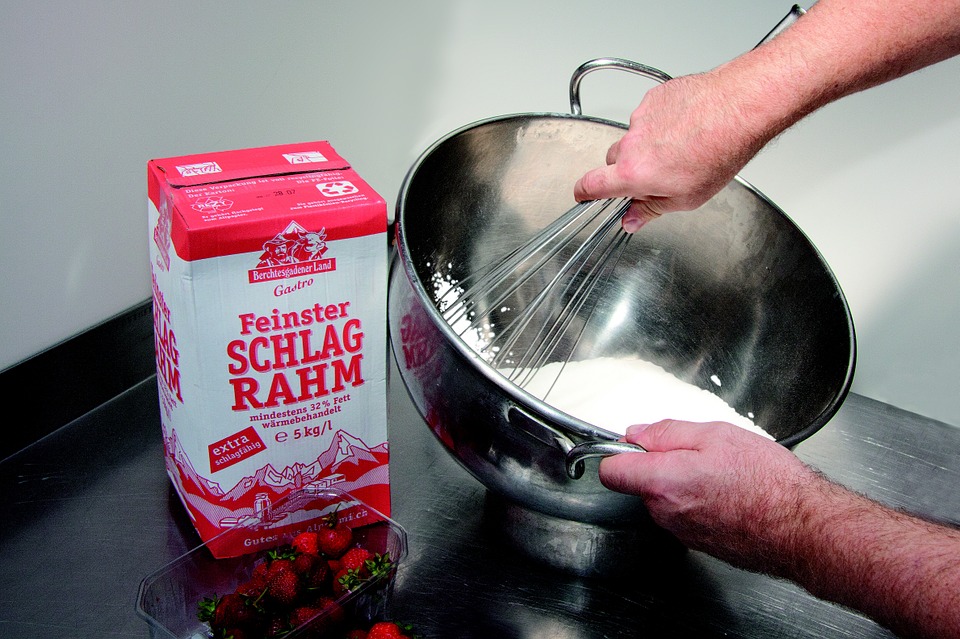This test is run by .
Note that your final mark will not be saved in the system.
Note that your final mark will not be saved in the system.
3.3.2.5 Raising agents Typeit
Target Level
4-5
Running Total
0
0%
Attempt
1 of 3
Type the correct answers into the spaces. Fill all the spaces before clicking ‘Check Answers!’

Raising agents are used in cooking to lighten the texture of certain foods and make them more appealing for consumers. They introduce to a mixture, which is then trapped in it, helping achieve a springy, soft texture. raising agents include bicarbonate of soda and baking powder.
- Bicarbonate of soda (NaHCO3) is a white powder added to baked goods for leavening. It requires to perform properly and avoid a soapy aftertaste. In the presence of water, acid and heat, bicarbonate of soda turns into – a gas, which is then trapped into the mixture. The reaction also produces small amounts of water (vapour) and salt, which are neutral for the flavour. During baking, the carbon dioxide turns into air bubbles. As these expand and rise, the mixture rises and sets.
- Baking powder is a white powder which contains and a weak acidic salt, such as calcium phosphate or sodium sulphate. In contact with water, it will go through many chemical reactions, which at the end will produce carbon dioxide. During baking the gas will expand and cause the mixture to rise. flours already contain raising agents (usually baking powder) in correct proportions, so using them is a good choice if you don’t know how much to use.
Mechanical ways of raising include physical actions that help incorporate air into a mixture, making it lighter. There are many methods to be aware of:
- helps introduce a lot of air into the mixture, trapping the bubbles in the liquid and creating a foam. A metal or plastic whisk is used to turn whole eggs or egg whites into a foam to produce, for example, meringue, crème anglaise, soufflé.
- with a wooden spoon helps produce batters, which are sometimes too heavy for a whisk. Batters are used to prepare pancakes, beer batter for fried fish or tempura for prawns.
- flour traps air bubbles between flour granules. It is useful in producing a sponge cake.
- traps air bubbles in a mixture of fat and sugar. The more air bubbles in the mixture, the lighter colour it will have. Helpful when making ice creams or whipping cream.
- is a technique where flour is rubbed into a fat such as a butter; this is used to make shortcrust pastries or scones.
- traps air between layers of food, e.g. in French (flaky) pastry.